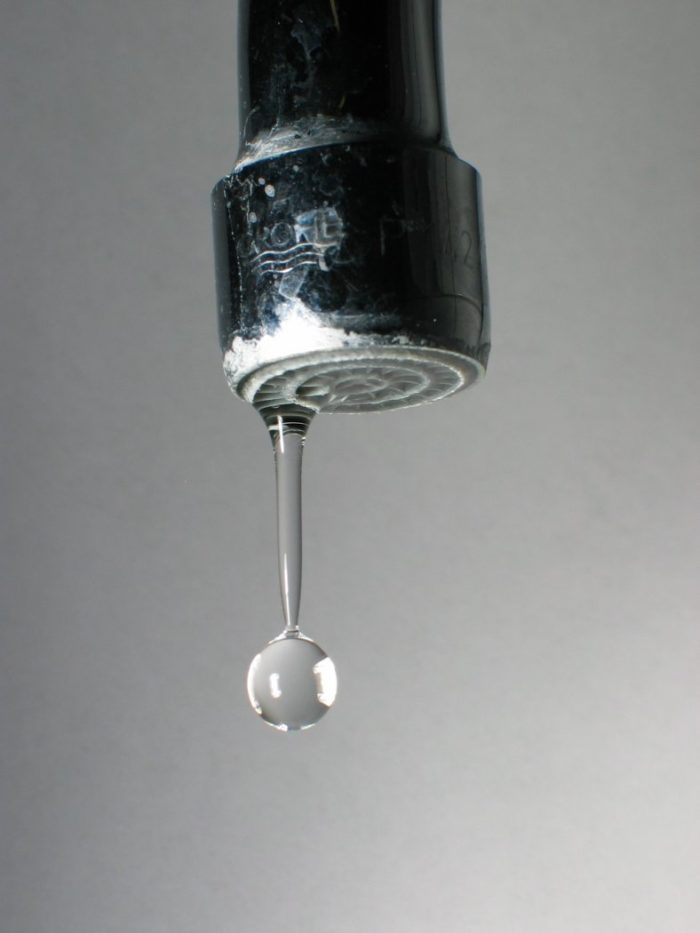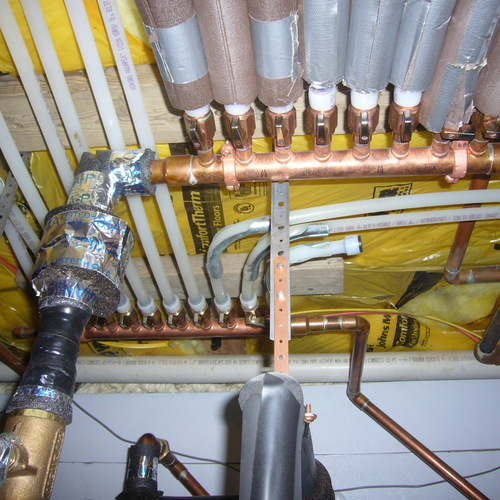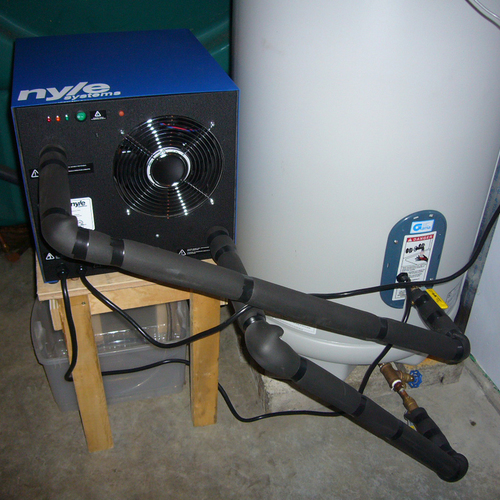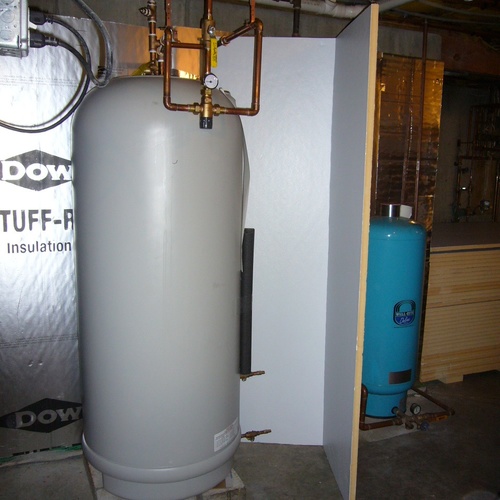
As homes become more and more efficient, we need to look for new frontiers in energy and resource conservation. One of the next ones on the horizon is water heating. We have many great options for heating water efficiently including tankless heaters, super high efficiency tank units, geothermal, and solar. They all have their pros and cons, depending on the particular project. One thing that they all have in common is that none of them are effective when connected to a poorly designed hot water distribution system.
It’s the piping, stupid!
I have heard stories of homeowners replacing their old tank water heater with a new tankless unit, only to be upset that the hot water didn’t arrive at their faucet instantly, and incorrectly blaming it on the new heater. The tankless heater was working perfectly, heating water only when needed, but the problem arises when that nice hot water needs to travel seventy or eighty feet to the fixtures, wasting water which runs down the drain waiting for the hot water to arrive, and wasting any energy used to heat water that remains in the pipes and cools off. We need to reconsider how we move hot water around the house using structured plumbing systems, on demand hot water pumps, and just plain common sense when designing our homes.
Bad Design is Hard to Overcome
We put too little thought into our house design, sticking bathrooms all over the place, with the master usually about 100 feet from the water heater. Those distant bathrooms cause us to waste water as it runs down the drain waiting for hot water to arrive at the fixtures. Low flow fixtures make this even more annoying – 1.5 gallons per minute is slower than 2.5 gallons per minute – DUH! Let’s start by putting the bathrooms close to the heaters and to each other. We save pipe, time, and water. When that isn’t possible, place the fixtures in as many groups as possible. Then design your hot water pipe system to get the water there as fast as possible. Straight runs, limited elbows to slow the flow, and pipe insulation. Check out on-demand pumps that move the hot water to the fixtures only when you need it, recirculating cold water back to the heater. Check out this demand system design in our strategies section.
How much water is enough?
Americans use about 150 gallons of water per day, including personal use as well as their share of commercial, industrial, and power generation needs. This compares to 31 gallons in the UK, and 5 gallons in Africa. We don’t need to lower our water use by 95% overnight, but it sure seems like we could cut down pretty dramatically without any major sacrifices in our lifestyles. Simple things like high efficiency fixtures are easy fixes. Maybe we could cut out a few heads in those spa showers — say, not put more than two in a stall (OK, three if you behave). Don’t run the water when you shave or wash dishes, and, finally, fix those damn leaks.
Weekly Newsletter
Get building science and energy efficiency advice, plus special offers, in your inbox.















2 Comments
Yep
Nice Article Carl,
It is the Piping!
It does start with the home design and fixture locations.
Then it is usually up to the the plumber to decide how to route her pipes.
Unless instructed otherwise she will follow the EASIEST route... not always the shortest or the one with the fewest bends.
The builder should insist (or offer an incentive) for the plumber make an extra effort to minimize the hot water piping distance.
Getting rid of Elbows in Hot water lines thanks to Gary Klein
We are doing a lot of work to eliminate all elbows in hot water lines to minimize turbulence inside the pipes.
If hot water displaced cold (plug flow) as it ran down the pipe the experience of the person waiting for hot water would be that the water was cold for a while and then suddenly turned hot as the hot water pushed all the cold out of the line. But we know that the water goes through a long period of getting gradually warmer before it turns hot. Gary Klein did some research where he calculated the amount of hot water in the line between the water heater and the sink and then measured the actual amount of flow that it took until the water got hot.
Turns out it was on the order of 40% more than the volume in the pipes to get past the warm to the hot. Further research turned up a phenomenon called laminar flow that was allowing the hot water to shoot ahead of the cold when it went around elbows and end-outlet tees that effectively mixed and cooled the hot water.
As a result of Gary's research I no longer permit any elbows in hot water lines and only side outlet tees (AKA 3/4x3/4x1/2 tees)except at roman tub fillers that need 3/4x3/4x3/4 tees. He is doing further research with systems based of 3/4x3/4x3/8 tees he calls "branch and twig" systems but I don't think my inspectors are quite ready for that yet.
We're also phasing out the use of low velocity (Grundfos and Laing) timer-activated recirculation pumps in favor of the high velocity (Metlund) demand-activated pumps that don't cycle unless a button or motion sensor indicates a need for hot water and so don't waste energy when there's nobody at home.
Another extremely low-tech and low-cost solution that has worked very well for us is simply to provide the master bath with a small under counter type 10 gallon electric water heater that is filled with hot water from a demand water heater located near the kitchen yielding the instant hot from the local tank with the efficiency and endless hot water of the demand water heater without the cost of the pumped recirculation. In one house the tank drained during an ice storm and the element fried when the power came back on and the homeowner didn't notice until months later when the water took a long time to warm up in that bathroom after they returned from a vacation. The tank was getting all the re-heating it needed from the hot water coming in from the demand water heater during daily use.
Log in or create an account to post a comment.
Sign up Log in